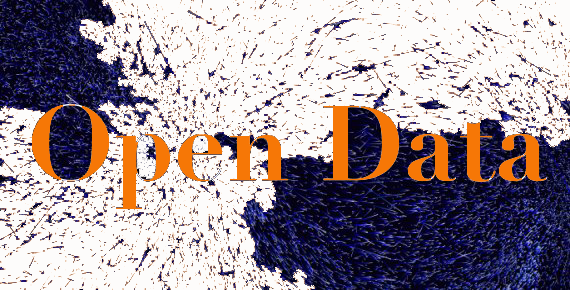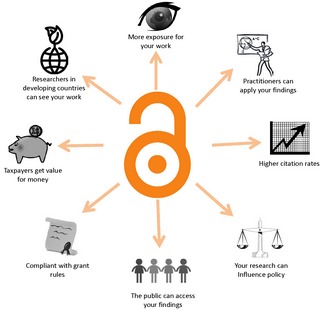
FAO plans to launch open access agricultural data portal
The United Nations Food and Agricultural Organization (FAO) announced that it will launch an Open Access portal for agricultural data in October.
The agricultural data portal, once launched, will contain both raw and analyzed satellite data. It will be easily and freely accessible for everyone. The data and information from this Open Access portal will have far reaching impact for water management and improve agricultural productivity. The data portal should contribute towards the creation of sustainable agriculture. According to FAO, countries in the Near East, North Africa and others that are prone to recurrent droughts especially stand to benefit.
Remote Sensing, consisting in part of satellite imagery, is a revolutionary new method of data collection. The collected data can be used to analyze the level of surface and ground water, health of crops, soil moisture and the level of precipitation. All are essential ingredients for agriculture and water management. The information extracted from the satellite imagery can be passed onto farmers in the field for practical application. There will be data on the continental level, the country (river basins) level and the irrigation schemes level.
Information Era
This is the information era. We know how important information is for almost everything we do on a daily basis. But the power and potential of information can only be realized if access to information is guaranteed. The ultimate goal of the Open Access movement, to facilitate the free flow of information, can only be realized by bringing down the pay-walls which stand in the way of sharing information and knowledge.
Remote Sensing data is an indispensable tool for agricultural development. But it is also prohibitively expensive, especially for real time, up-to-date data. Remote Sensing data has been trapped behind pay-walls, just like other scholarly output, despite it being developed specifically to be used in the field. The FAO took the initiative to launch the project, and as a result now bear the costs for it. The agency did not reveal how much the project costs and how it is going to fund it.
The Open Access movement, started at universities and aimed at liberating knowledge and information from the pay-walls erected by big publishers and data owners, has gradually expanded and reached the agricultural sector. Open Access, by impacting the agricultural sector, has reached a point of directly impacting the day to day lives of ordinary citizens.
Source FAO

Reputation Of Open Access Journals On The Rise
Academics’ perceptions on Open Access are improving.
One of the challenges Open Access publishing has been facing is a perceived lack of quality. The perception is so rampant that it casts a big shadow not only on Open Access journals but also on authors. It’s a very serious issue which held back many researchers from publishing their research output on fully Open Access journals. However, the research conducted to test changes in perceptions associated with Open Access quality revealed that opinions are shifting.
Two major scholarly publishers, the Nature Publishing Group and Palgrave Macmillan conducted a survey on 22,000 academic researchers. The result revealed remarkable improvement regarding the image of Open Access journals. This year, only 27 percent of the surveyed researchers still believe that Open Access publications do not meet quality standards. Last year it was 40 percent of those who participated in the survey who held the same belief. This is a significant shift in researchers’ opinion and perceptions of Open Access. These changes are not evenly distributed across fields, though. In the field of social sciences, business and humanities the gain is very astonishing; negative perception about Open Access journals dropped from 54 percent to 41 percent. Despite these improvements in reputation and the push from funders to publish Open Access, quality concerns are still the major factor keeping some researchers from publishing on Open Access journals.
What matters to authors
The survey highlighted another interesting point: the reasons why authors choose one journal over the other. According to this survey there are four major leading factors. First and foremost, it is the reputation of the journal. Relevance of the journal content is another point which influences authors’ decision about where to publish. Many authors also consider the quality of the peer review process before sending their manuscripts to publishers. Finally, journals’ impact factor and readership influences the decision of authors.
The Head of Insights at Nature Publishing Group and Palgrave Macmillan, Dan Penny, believes that the negative stigma attached to Open Access will fade away with time. Improving reputation of Open Access journals and funders mandate will apparently help improve perception of authors about Open Access journals.
Momentum for Open Access
Of course, improving the reputation, impact factor and even the peer review process of Open Access journals is not something that can be done overnight; it will take time. This is in part because most Open Access journals have not been in the business for more than a decade. But now there is a steady growth of journals and publishers entering the Open Access business. If this momentum is maintained, Open Access will definitely improve and eventually deliver what the scientific community and the general public expect from it.
Source Nature

Two prominent open access organizations, BioMed Central and Partnerships for Health Information, are working to launch a repository meant to facilitate health sciences research in Africa. This initiative, once implemented successfully, will boost knowledge based research creation and the dissemination of research output. According to these organizations the repository will be unveiled in Cape Town, South Africa, during the Health and Biosciences Libraries session.
In Africa there are serious challenges, mainly due to financial constraints, as far as access, availability and dissemination of scholarly outputs are concerned. The BioMed Central and PHI program will address these bottlenecks in two main approaches: support the development of national and institutional repositories. These approaches enable ‘access to health information for health professionals and researchers, governmental departments, institutions, librarians and others within the country.’
The initiative, once realized, will undeniably improve research in the field of health sciences.

International development agencies and organizations are loudly acknowledging the tremendous contributions open access to data might have for development- both on economic and social fronts. The policy statementreleased by the Canadian International Development Research Center (IDRC) is a testament to this. Moreover, the views from the recently concludedconference on open data, argued Stephen Dale, underscored the same reality.
Open access might transform the lives of millions in developing countries in many ways. It has an incredible potential for knowledge dissemination, innovation acceleration and improving the lives of many, wrote Naser Faruqui of IDRC. Furthermore, he argued that development agencies, realizing far reaching effects of open access, are promoting open development models, which based on an open access to information and data, ‘to unleash economic value, address democratic shortfalls, improve learning, and advance science.’
The IDRC is not the only organization that recognizes the benefits open access provides in the areas of innovation and sustainable development. According to Stephen Dale the participants of the recently concluded open access conference, including Canadian government and the World Bank representatives, extensively explored the impact open access has on education, elections, agriculture, health services, and the environment. Moreover, they esteemed the concrete results open access demonstrated and above all its immense potential in enhancing efficiency and opportunity for all.
Economic benefits that both developing and developed countries might harvest from open access are huge. The IDRC President Jean Lebel indicated that open data could generate more than $3 trillion additional economic values a year. This is a huge economic benefit that individual countries’ policy makers and open access advocates should not ignore.
Furthermore, for institutions in the developing nations open access provides diverse opportunities. Some of these benefits are cost saving, visibility and knowledge democratization. For many institutions in the developing world cost related challenges are in the heart of all the problems. This is principally true for resource stretched universities and research institutions which normally rely on a limited number of journals due to the high cost of subscription. Open access, effectively liberates those institutions from absurdly high subscription fees. The resources saved as a result of access to freely available scientific outputs can be used to develop or expand core educational and research infrastructures.

Recently, scholars and several research libraries have rolled out a petition to boycott Elsevier, the biggest scholarly materials publisher, in protest of its new open access policy. Elsevier, an Amsterdam based company, again faced another set of challenges- this time it’s homegrown.
The Association of Universities in the Netherlands (VSNU- its Dutch acronym) has announced that the negotiation with Elsevier over open access is going nowhere, because it is in a deadlock. Last year, the association began negotiating with Elsevier to reach consensus on open access and journal subscription matters. But so far, compromise and agreement remained elusive.
The statemnet release by the VSNU made clear that Elsevier brought forward a series of proposals. None of them, however, appeared good enough to be accepted by the team of negotiators appointed by VSNU. The association’s position is to get the renewal of the previous agreement on a bundled package of journal subscription, which is known as ‘big deal’. The association further demanded that Elsevier allows full access (through open access) to sixty percent of the country’s scientific output by 2016 and a hundred percent by 2024. While the negotiations with Elsevier showed no result, the VSNU made clear that negotiations on open access with other major publishers such as SAGE, Springer and Wiley have succeeded.
The VSNU, disappointed and frustrated by the deadlock, has called up on academics to play a vital role to break the deadlock. First and foremost, the VSNU hopes, the academics on the editorial board may use their leverage to exert pressure on Elsevier. If this yields no result, it will request the academics to also quit Elsevier’s editorial board and also stop publishing on Elsevier’s journals.
Industry dominant academic publishers charge high subscription fees. Yet, research libraries and authors around the world subscribe to journals owned by companies like Elsevier. The major reasons behind this are alleged editorial quality and impact factor of the journals publsihed by those companies. However, skyrocketing subscription fees combined with a growing open access movement are forcing some authors to start publishing on open access platforms. Moreover, research libraries are making policy changes to embrace the use of open access scholarly materials; which are showing steady improvements both in quality and availability.
Source VSNU

